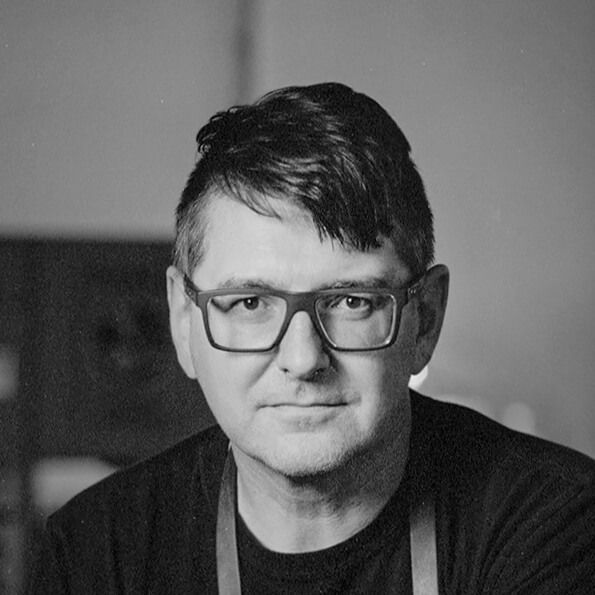Small scale mokume gane process
Chris Ploof
This paper will showcase the history and technique of mokume gane. From the beginnings in feudal
Japan to it’s use as a jewelry material by modern smiths around the world, mokume gane is a demanding
technique that even those well versed in jewelry metals struggle with. This presentation will illustrate the
beginnings of mokume gane, and the techniques used daily by two of the most prolific makers of quality
mokume gane in the world. Scientific method will be stressed, rather than scientific testing. This paper and general jewelry skills will allow you to make mokume gane like the experts.
Bio

Chris Ploof
Chris Ploof was born in a small town in Massachusetts. From a young age, he was always interested in science and engineering. His first exposure to metalworking was going to a local living history museum, where he was always captivated by watching the craftspeople work.
Especially fascinating was the blacksmith and tinsmith. Watching them move metal definitely had affected him.
Another big influence was his maternal grandfather, who was the superintendent of a huge mill complex. Chris loved visiting his grandfather at work and seeing the machines knit and weave, but really, he loved seeing them taken apart and being fixed.
In grade school, Chris and his friends would always have a bike or two hanging around that they would take apart and put together. This led him to my first job in the bicycle industry while he was in high school. At graduation, he decided to join the Army. During the four years spent as a soldier, when Chris wasn’t deployed, his love of history and cycling were not ignored – no local living history museum was safe. He also never missed the opportunity to get a bike ride in whenever he had the time. During that time, he met a Civil War re-enactor, and after he left the army, he started to participate in the re-enactments. Pretty quickly on, he learned that there were always needs that all re-enactors shared, namely tent stakes and irons for cooking over the fire, so he decided to teach himself blacksmithing and learn to make these items. He purchased his first anvil from the last operational blacksmith in the town he grew up in. He was very resourceful – in fact, his first forge was a 55 gallon drum, firebricks, and a hair dryer. This led to sewing and creating clothing and other items, as well as making a few muskets from kits.
He ended up with a small business that paid for his hobby.
Meanwhile, Chris was still deeply involved in the cycling industry, working as everything from a sales manager to a service manager, a team mechanic for both men’s and women’s cycling teams, and eventually becoming the head mechanic and trainer of a multi store bicycle retail chain.
It was during the mid 1990’s that he decided he wanted to work on sand casting some parts.
There was not a lot of information, so he signed up for an adult education class in lost wax casting. He knew the focus of the class was jewelry, but he figured it would be applicable to sand casting larger items (like bicycle parts) out of iron and aluminum. What he learned was something completely different – he learned that he loved making and working in the smaller scale that jewelry provides.
After discovering his love of jewelry making, Chris attended a metalsmithing program and also worked as an apprentice in a local jewelry store. He purchased meteorite iron, and he learned about working with mokume gane and Damascus steel. In the early 2000’s, it became apparent that as much as he loved the bicycle industry, he loved the jewelry industry even more. He has been driven by the strong desire to create beautiful pieces using the techniques he loves, and his team has been inventing and innovating ever since. His work has led to consulting projects all over the world, as well as multiple awards from the Santa Fe Symposium for our research and discoveries and countless mentions in various trade publications.
Back